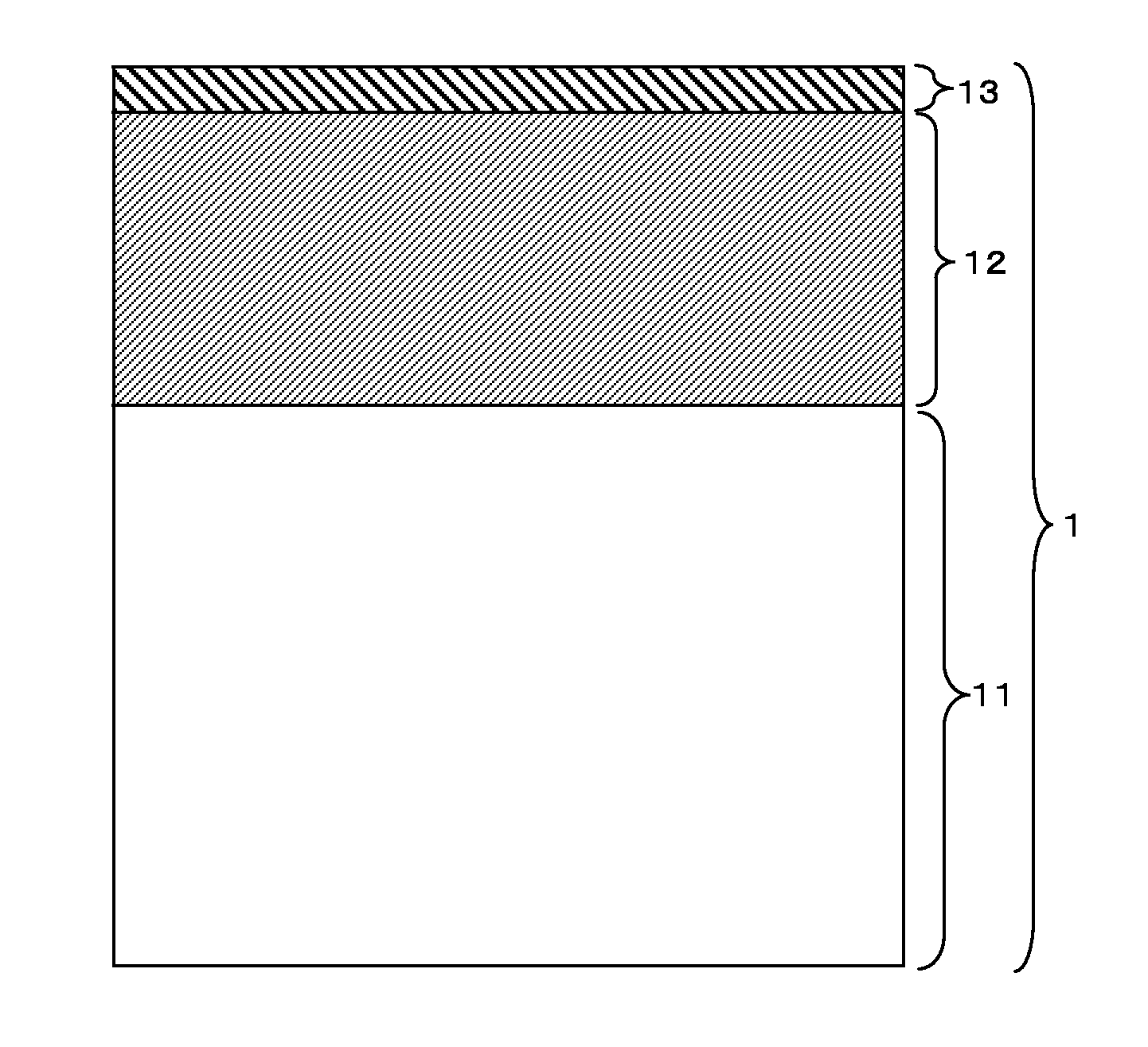Anti-reflection film
a technology of anti-reflection film and anti-static properties, applied in the field of anti-reflection film, can solve the problems of dry coating method unsuitability for mass production, problem of dirtiness, and decrease in display quality, and achieve the effects of sufficient anti-reflection properties, excellent contrast, and sufficient anti-static properties
- Summary
- Abstract
- Description
- Claims
- Application Information
AI Technical Summary
Benefits of technology
Problems solved by technology
Method used
Image
Examples
example
Example 1
[0127]An 80 μm-thick triacetyl cellulose film was used as the transparent substrate.
[0128]A polarizing plate in which an iodine-added elongated polyvinyl alcohol as the polarizing layer was interposed between two 80 μm-thick triacetyl cellulose films (first transparent substrate and second transparent substrate) was prepared.
[0129]16.7 parts by weight of Baytron P CH 8000 (dispersion liquid, solid content: 3 wt %, made by H. C. Starck GmbH) as the electron-conducting polymer, 10 parts by weight of dipentaerythritol hexaacrylate (DPHA), 10 parts by weight of pentaerythritol tetraacrylate (PETA) and 30 parts by weight of urethane acrylate UA-306T (made by Kyoeisha Chemical Co., Ltd.) as the ionizing radiation curable material, 2.5 parts by weight of Irgacure 184 (made by Ciba Japan KK) as the photopolymerization initiator, and 33.3 parts by weight of a solvent mixture (1:1 weight ratio) of methyl ethyl ketone and butyl acetate as the solvent were mixed together to prepare the...
example 2
[0132]Similar to Example 1, an 80 μm-thick tri acetyl cellulose film was used as the transparent substrate.
[0133]Similar to Example 1, a polarizing plate in which an iodine-added elongated polyvinyl alcohol as the polarizing layer was interposed between two 80 μm-thick tri acetyl cellulose films (first transparent substrate and second transparent substrate) was used.
[0134]6.7 parts by weight of dispersion liquid of antimony doped tin oxide (ATO) particles (average particle diameter: 8 nm, solid content: 30 wt %) as the electron-conducting inorganic particles, 9.6 parts by weight of dipentaerythritol hexaacrylate (DPHA), 9.6 parts by weight of pentaerythritol tetraacrylate (FETA) and 28.8 parts by weight of urethane acrylate UA-306T (made by Kyoeisha Chemical Co., Ltd.) as the ionizing radiation curable material, 2.5 parts by weight of Irgacure 184 (made by Ciba Japan KK) as the photopolymerization initiator, and 45.3 parts by weight of a solvent mixture (1:1 weight ratio) of methyl ...
example 3
[0137]Similar to Example 1, an 80 μm-thick tri acetyl cellulose film was used as the transparent substrate.
[0138]Similar to Example 1, a polarizing plate in which an iodine-added elongated polyvinyl alcohol as the polarizing layer was interposed between two 80 μm-thick triacetyl cellulose films (first and second transparent substrate) was used.
[0139]16.7 parts by weight of Baytron P CH 8000 (dispersion liquid, solid content: 3 wt %, made by H. C. Starck GmbH) as the electron conducting polymer, 6.7 parts by weight of a dispersion liquid of antimony doped tin oxide (ATO) particles (average particle diameter: 8 nm, solid content: 30 wt %) as the electron-conducting inorganic particles, 9.6 parts by weight of dipentaerythritol hexaacrylate (DPHA), 9.6 parts by weight of pentaerythritol tetraacrylate (PETA) and 28.8 parts by weight of urethane acrylate UA-306T (made by Kyoeisha Chemical Co., Ltd.) as the ionizing radiation curable material, 2.5 parts by weight of Irgacure 184 (made by C...
PUM
| Property | Measurement | Unit |
|---|---|---|
| wavelengths | aaaaa | aaaaa |
| wavelengths | aaaaa | aaaaa |
| wavelengths | aaaaa | aaaaa |
Abstract
Description
Claims
Application Information
 Login to View More
Login to View More - R&D
- Intellectual Property
- Life Sciences
- Materials
- Tech Scout
- Unparalleled Data Quality
- Higher Quality Content
- 60% Fewer Hallucinations
Browse by: Latest US Patents, China's latest patents, Technical Efficacy Thesaurus, Application Domain, Technology Topic, Popular Technical Reports.
© 2025 PatSnap. All rights reserved.Legal|Privacy policy|Modern Slavery Act Transparency Statement|Sitemap|About US| Contact US: help@patsnap.com



